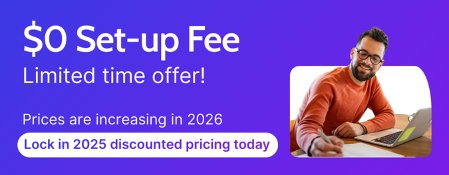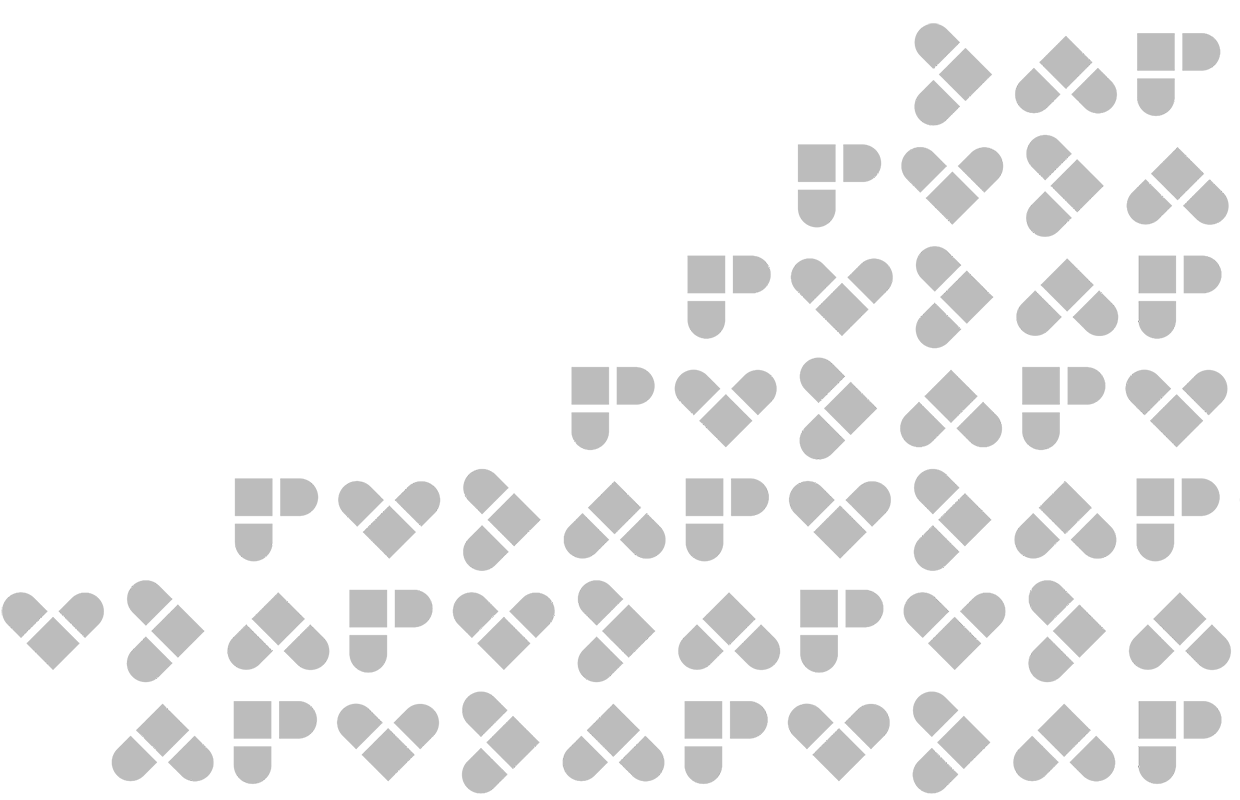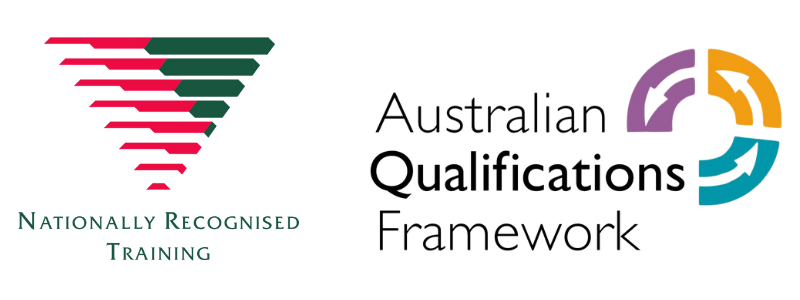Certificate IV in Information Technology (Web Development)



Course Overview
The ICT40120 - Certificate IV in Information Technology (Web Development) is a Nationally Recognised qualification designed to equip you with the skills to design, build, and maintain websites and web applications. This course blends creativity with technical expertise, preparing you for a career in the fast-paced digital industry.
You'll gain hands-on experience in modern web design, development, and administration, learning how to build websites from scratch while also developing broader business and problem-solving skills. The course covers front-end and back-end web development, ensuring you graduate with industry-relevant knowledge and practical skills to create dynamic, user-friendly websites.
Whether you're starting your career in web development or looking to enhance your digital skills, this qualification provides a strong foundation for roles such as web developer, front-end designer, or website administrator.
Powered by
What You'll Learn
This qualification covers web development skills and processes from planning to testing, and trains you in collaboration, ethics, and client relationship management in an IT environment. From the online course, you'll learn to:
- Fundamentals of designing and implementing websites
- Develop and upload websites using HTML, XML, CSS and other tools
- Write scripts and create relational databases using SQL
- Learn how to host a website
- Learn to Program with Python Language and SQL
- Working with Azure or AWS to Configure Cloud Services
- Learn to comply with copyright, Privacy and ethics
- Add accessibility and SEO to web
- Create technical documentation and apply advanced critical thinking
This qualification is perfect for aspiring web developers, front-end designers, and digital creators looking to break into the industry. Graduates can pursue roles such as web developer, front-end developer, WordPress developer, or UI/UX designer, with pathways into advanced fields like full-stack development, e-commerce, or app development.
Technologies Covered
- Artificial Intelligence
- Python
- HTML
- CSS
- JavaScript
- Microsoft
- AWS
- Cloud
- Cyber Security
- Compliance
- Communication
- SEO
- HyperV
- Productivity Tools
- FTP
- Accessibility
- ISP Hosting
- Structured Query Language (SQL)
Upskilled Partners with FinTech Australia
We’ve partnered with FinTech Australia to help Upskilled students gain exposure to leading fintech brands and unlock potential job opportunities in the industry.
Your Gateway to FinTech Jobs
Step into a world of opportunities with Upskilled's exclusive Technology Job Portal — your gateway to the future. As part of our commitment to your success, all Upskilled students gain free access to an innovative platform to connect directly with leading employers looking for the talent and expertise you're developing right now. This isn't just education; it's your launching pad into the career of your dreams. Enrol in any Upskilled Technology Course today, and take the first step towards a brighter, more connected future.
Studying with Upskilled
What's Included?
By choosing Upskilled's ICT40120 - Certificate IV in Information Technology (Web Development), you'll gain access to resources that enhance your online learning experience, making it interactive and engaging:
Connect directly with employers seeking your new skills.
Access top vendor content like Microsoft and prepare for certifications.
Enjoy access to video tutorials from industry leaders.
Access course materials through our customised learning platform.
Get help from our dedicated Australian-based support team.
Learn from experts with decades of industry experience.
Modules
To satisfy the requirements of this qualification, you'll need to complete the following units of competency.
This unit describes the skills and knowledge required to identify emerging technologies and practices in the ICT sector and evaluate their potential impact on organisational practices. It applies to individuals who work across a wide range of information technology (IT) areas, including technical support, network administration, web technologies, software applications and digital media technologies.
This unit describes the skills and knowledge required to create simple applications through introductory programming techniques. It applies to those who have responsibility for creating applications and includes applying language syntax, control structures to create code, using programming standards, testing and debugging.
This unit describes the skills and knowledge required to comply with the protection and lawful use of intellectual property (IP) and to implement relevant organisational ethics and privacy policies. It applies to individuals who are required to use IP owned by other persons and organisations, and to support organisations and stakeholders with the compliance of organisational ethics, and privacy policies.
This unit describes the skills and knowledge required to identify opportunities where artificial intelligence (AI), machine learning (ML) and deep learning (DL) can be applied to support the automation of work tasks and improve organisational productivity. The unit applies to individuals who may work across a wide range of information and communications technology (ICT) roles, including support technicians, system administrators, programmers and cloud systems administration support workers. No licensing, legislative or certification requirements apply to this unit at the time of publication.
This unit describes the skills and knowledge required to contribute to cyber security risk management, which includes assisting in developing and managing associated risk management strategies. It applies to those working in a broad range of industries and job roles who work alongside technical experts to develop cyber security risk-management strategies.
This unit describes the skills required to work collaboratively in virtual Information and Communications (ICT) team environments to achieve organisational objectives. It includes contributing to performance and capability within teams, participating in team activities, exchanging knowledge and skills and providing support to team members. It applies to all individuals who work in teams that utilise multiple technologies to complete a collective task.
This unit describes the skills and knowledge required to identify, record, prioritise and resolve client Information and Communications Technology (ICT) support activities and escalate as required. It applies to experienced individuals who use specialised and technical knowledge to take responsibility in providing client-based ICT support to end users in an office or working environment.
This unit describes the skills and knowledge required to use advanced-level critical thinking skills in a professional context. This includes using methods of analysis, synthesis and evaluation. This unit applies to individuals who evaluate processes, products and services that may be proposed or already existing. This unit applies to individuals who are typically responsible for developing work processes, products and services that may be proposed or already existing.
This unit describes the skills and knowledge required to undertake a basic review and analysis of cloud computing delivery and deployment models to support the needs of a business. The unit applies to individuals engaged in the basic review of a cloud computing solutions for a business or enterprise.
This unit describes the skills and knowledge required to design a website to client specifications, within a particular technical and human interface environment. The unit applies to those who are responsible for the analysis, documentation and design of the human computer interface, including requirements that drive design for either internal or external clients.
This unit describes the skills and knowledge required to design and create basic markup language documents and cascading style sheets (CSS) in order to define the structure and style of a website. It applies to individuals in ICT roles who are required to create web pages with consistency in appearance and user experience.
This unit describes the skills and knowledge required to transfer content, from a remote location to a web server, using a range of commercial information and communications technology (ICT) products. The objective of this skill is the upload of new and revised information on a website. The unit applies to individuals who work as web developers and designers and required to update websites.
This unit describes the skills and knowledge required to confirm accessibility of websites for users with auditory, visual, mobility and cognitive impairments. The unit applies to web developers and designers who are required to adhere to international and Australian industry standards and practices to ensure that users with accessibility requirements are not disadvantaged when using websites.
This unit describes the skills and knowledge required to determine a client's current and future internet service providers (ISPs) needs. The unit applies to individuals working in Information and Communications Technology (ICT) who take responsibility for comparing and evaluating internet service provider (ISP) services.
This unit describes the skills and knowledge required to use a text editor to design, create and save web pages to a given specification. The unit applies to individuals working as web designers and developers, who generate a framework for internet information using a markup language according to client briefs.
This unit describes the skills and knowledge required to implement industry standard internet-marketing practices using search engine optimisation (SEO) techniques, including introducing web pages to search engines and monitoring search engine performance. The unit applies to individuals who make recommendations and monitor keyword enhancements, search engine marketing (SEM) and social network marketing (SNM).
This unit describes the skills and knowledge required to design, develop and test relational databases to meet specifications. It applies to individuals who are database support staff, application programmers and web designers who are required to create a simple database to store information for an online, desktop, web or mobile device application, using a simple entity relational database on a web or database server environment.
This unit describes the skills and knowledge required to produce structured query language (SQL) statements to work with server-side scripts, enabling web developers to interact with web server databases. The unit applies to individuals in a range of roles who are responsible for creating server-side interaction with dynamic web pages, using SQL as a means of communicating with databases.
This unit describes the skills and knowledge required to create technical documentation that is clear and understandable for the target audience and both easy to navigate and apply. It applies to individuals working as technical writers, designers, developers and support staff, who are required to produce technical support documents of Information and Communications Technology (ICT) related work.
This unit describes the skills and knowledge required to configure core cloud services including compute, storage, databases and autoscaling according to business needs and workload. The unit applies to cloud computing architects, developers and cloud engineers utilising cloud services and those engaged in deploying cloud computing solutions for a business.
Career Outcomes
Possible Careers
Students who successfully complete this qualification may be able to pursue the following career outcomes.
Industry Outlook
Find out why IT is one of the hottest occupations to be in:
Salary
$75K Annual Salary
Jobs
59,200
Education pathways
If you successfully complete the ICT40120 - Certificate IV in Information Technology (Web Development), you may be able to continue your education and study the ICT50120 - Diploma of Information Technology.
Interested in another specialisation? Check out our other Information Technology courses below:
- ICT40120 Certificate IV In Information Technology (Systems Administration Support)
- ICT40120 Certificate IV in Information Technology (Programming)
- ICT40120 Certificate IV in Information Technology (Networking)
- ICT40120 Certificate IV in Information Technology - Focus on Cyber Security
Find out why IT is one of the hottest occupations to be in:
Payment Options
All amounts are in AUD (RRP includes surcharge fees). Speak to our friendly Education Consultants at 1300 009 024 to learn about flexible payment plans.
*Terms & Conditions Apply. Government Funding may be available in some states. Please contact our education consultants to learn more. You can also check the Government Funding Section in FAQs.
Government funding
At both a state and federal level, government commitment to upskilling the Australian workforce has resulted in a comprehensive framework of funding schemes and incentive opportunities. As a result, many Upskilled participants are provided incentives by the Government to undertake training and/or find that their courses are heavily subsidised.
Government funding options for:
Certificate IV in Information Technology (Web Development)
Major schemes include:
An Upskilled education consultant will contact you within 48 hours
Our Trainers
Upskilled IT trainers are industry professionals with extensive experience and expertise, dedicated to providing practical, hands-on learning. They are committed to helping students develop the skills to succeed in the fast-paced and ever-evolving tech industry.
Hear from our past students

Excellent – Matthew is the best trainer ever, he was so helpful and was always there for me when I was stuck.

I had a great time learning computer programming in upskilled. The support is amazing and the study aid is amazing. Trainers MD and Matthew are very helpful. Vikram who is my instructor for cloud computing is very supportive and patient. I have enjoyed every bit of my subject even the most boring ones. I recommend upskilled. It is a great learning institution that encourages a supportive and a holistic learning environment. They also make you think beyond the box. My study here enabled me to perform a lot of process improvement, and near automation of some of the most important process we do at our work. I only wish upskilled offers gaming development and gaming art in their future courses as i am leaning to those specialties. But overall, the study is definitely worth it. Do it now. Start your year and build something your future self would thank you. I know i did. I mean thanking myself. Not you.

I've just completed my Certificate IV in Information Technology (Web Development), and I wanted to share my experience. The faculty were exceptional; Mr Roderick was always available to answer questions and clarify any misunderstandings I had, and provided the support needed to get me across the finish line. While I only had a couple of units with Mr Faridul, his feedback was always clear, he always provided encouragement, and I appreciated that.
How to enrol
We will invite you to an online orientation session and you can get started on your course.
Include your details, proof of previous learning, address verification, and preferred payment option to finalise your enrolment.
A friendly Education Consultant will be in touch to answer all your questions.
What you need to know
Entry Requirements
There are no formal entry requirements for the ICT40120 - Certificate IV in Information Technology (Web Development) course. To ensure you get the most out of your training, the following process applies:
Recommended Skills and Resources:
- English literacy and numeracy skills at a Year 10 level.
- Access to a modern computer with high-speed internet.
- Access to a device with audio/video recording capabilities.
- Basic computing skills, including video creation and uploading.
Self-Paced Learning and Course Duration
Upskilled's flexible, self-paced online courses let you balance personal and work schedules. With a training plan to keep you on track, most students complete the course in 12-18 months, but motivated learners can finish faster. Speak with an Education Consultant to discuss your study and completion goals.
Assessment
The ICT40120 - Certificate IV in Information Technology (Web Development) online course includes research-based assessments where you'll answer questions based on covered concepts. You'll also work on scenario-based projects and build a portfolio of digital assets (photography, audio, video, text) to showcase your skills when applying for jobs.
Work in a Simulated Workplace
Gain practical experience by working on real-world tasks in a simulated ICT workplace. Access this environment through our MyUpskilled platform and develop job-ready skills while completing online assessment tasks.
Recognition of Prior Learning / Credit Transfer
You may be eligible for Recognition of Prior Learning (RPL) or Credit Transfer (CT) with supporting evidence of prior education or work experience. This can reduce your study load or course duration. Speak with your Education Consultant before enrolment for details, or download the application from MyUpskilled after enrolment. A trainer will assess your eligibility.
Dedicated IT Trainers
Our IT trainers are dedicated professionals with the skills and knowledge to keep you updated on the latest industry trends. They offer qualifications in web development, cybersecurity, and networking, providing the guidance you need to succeed in IT.
The IT faculty fosters a supportive learning environment with 'Ask Me Anything' Zoom sessions, where you can receive guidance and collaborate with fellow students.
FAQs
Learning web development gives you the opportunity to flex your creativity to help build websites for clients. If you have a genuine interest in working with people to build their websites to help meet their business or organisational objectives, then learning web development may benefit you in the long-term.
The ICT40120 - Certificate IV in Information Technology (Web Development) is a qualification that can provide you with the training in preparing you for a career in either web design or web development.
If you're thinking about starting a career in this field, here are some reasons why you should consider it as an option:
- There are plenty of career opportunities in web development.
- Working as a web developer means that no day is ever the same and that problem-solving will be part of your role.
- There is a high-demand for web developers, with salary increases the more experienced you are.
You can work for a variety of workplaces including startups, agencies or large corporations. If you want to work for yourself, there are plenty of freelance opportunities.
The ICT40120 - Certificate IV in Information Technology (Web Development) is an online course that can give you the training needed to pursue a career in web development. In addition to units with a focus on web development, you'll be able to gain broader business skills that can help you build client relationships and develop websites that meet specific requirements and align with business objectives.
Studying this course with Upskilled can help you establish a good foundation on web development concepts, as you'll receive training on building websites for clients. You'll also learn some valuable transferable skills such as effective communication, problem-solving and creative thinking.
- Completed Year 10 or equivalent; or
- A qualification at Certificate III level or higher; or
- 3 years of relevant industry experience in a role that requires the use of written documentation and communication
Since this course is delivered online, you'll need to be self-motivated and have a decent laptop/computer to work on to be able to make progress on your course.
The average completion rate for the ICT40120 - Certificate IV in Information Technology (Web Development) course is 12-18 months so having motivation in doing your studies on a consistent basis can help you accelerate further.
Upskill to stay ahead of the curve.
Speak with an Upskilled Education Consultant to gain insightful guidance on identifying the ideal course for your career path and future aspirations.
.png)



